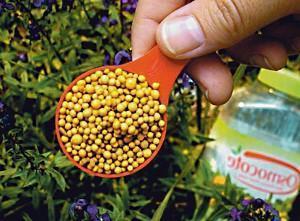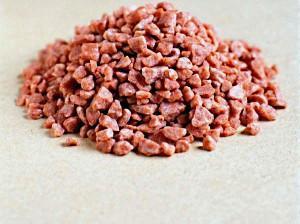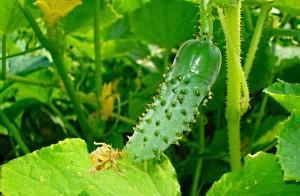Potash fertilizers, their value and application
 The main sign of a lack of mineral nutrients is the appearance of marginal burns on the leaves, their darkening and folding. This means that the plant needs potash fertilizers.
The main sign of a lack of mineral nutrients is the appearance of marginal burns on the leaves, their darkening and folding. This means that the plant needs potash fertilizers.
Together with phosphorus and nitrogen, potassium acts as one of the main elements of mineral nutrition for plants, but unlike them, it is not a constituent part of organic matter. The ionic form of potassium in the form of soluble salts is found inside plant cells, in the cell sap.
In the vital parts of young plants, there is much more potassium than in the same, but older representatives of the species. If potassium is insufficient in the nutrient medium of young shoots, then the process of re-utilization takes place (reuse of nutrients as a result of the outflow of potassium from old plants into the organs of young, growing inflorescences).

How to apply potash fertilizers for cucumbers in greenhouse growth conditions?
 Cucumbers are early ripening types of vegetable crops. In greenhouse conditions, cucumbers develop even faster and can yield almost all year round. Like other plants or garden crops, cucumbers need fertilization.
Cucumbers are early ripening types of vegetable crops. In greenhouse conditions, cucumbers develop even faster and can yield almost all year round. Like other plants or garden crops, cucumbers need fertilization.
Since their root system is not resistant to lack of nutrients, this can lead to the loss of part of the crop. Therefore, it is necessary to apply the necessary fertilizers to the soil on time, while the value of potash fertilizers is very large.
Before starting to feed all the plants, it is recommended to try first the effect of fertilization on several bushes. After 2-3 days, you should check the fed cucumber bushes. If their growth has improved, it means that the proportion is maintained correctly, and potash fertilizer can be applied to the soil to all the remaining bushes.
Cucumbers do not tolerate excess and deficiency of potassium. The first signs of potassium deficiency are the appearance of a light green edge along the edge of the leaves. Oversaturation with potassium causes the appearance of a mosaic yellow-green color on the leaves and a decrease in the amount of magnesium.
To avoid this, you need to know how to apply potash fertilizers to cucumbers during their greenhouse growth.
The planning of the amount of dressings for greenhouse cucumbers largely depends on the preparation of the soil in the greenhouse in autumn and spring.
 Based on the practice of soda-garden research, direct feeding of the cucumber plant on poorly prepared soil should be carried out only in the summer period from 3 to 5 times, at approximately the same intervals or according to the needs of a particular bush.
Based on the practice of soda-garden research, direct feeding of the cucumber plant on poorly prepared soil should be carried out only in the summer period from 3 to 5 times, at approximately the same intervals or according to the needs of a particular bush.
With well-fertilized soil in the greenhouse in spring or autumn, only two dressings are carried out:
- Before the cucumber bush begins to bloom. For this, summer residents prepare a complex fertilizer (add to 10 liters of water: mullein or liquid bird droppings - 0.200 kg., superphosphate - one teaspoon, potassium sulfate - 1 teaspoon). With this substance, plants are watered at the root with a watering can.
- Before the beginning of fruiting.Fertilizers are applied by gardeners during the formation of ovaries. For this, a 10-liter bucket of water and 150 g of mullein are used, and one tablespoon of nitrophosphate should also be added.

If mullein is not available, you can use regular herbal tea made from finely chopped roots of nettle, woodlice and dreams... It is insisted for about 5 days, then applied to the soil at 3 l / m2... Potassium fertilizer for cucumbers can also be applied in the form of potassium chloride. It can be used in the case of an open greenhouse.
You should know that the use of chlorine is highly undesirable for cucumbers. Potassium chloride is not applied directly for plant nutrition, but long before that, during the autumn soil preparation. Before the cucumbers are planted in the soil, the rains will wash the chlorine out of the soil, leaving potassium useful for cucumbers in it.
The most suitable and optimal option for mineral fertilizer for cucumbers, regardless of the place of planting (greenhouse or vegetable garden), is the use of potassium sulfate. In another way it is called potassium sulfate fertilizer (contains 50% potassium). It is in the form of a crystalline powder with a grayish tint or pure white color, which is easily dissolved in water. Most importantly, it does not contain chlorine.
The application of mineral fertilizers in the required proportions depends on the spring and autumn soil preparation. Before using this or that potassium-based fertilizer, you need to know the characteristics of the soil and the nutrient requirements of cucumbers. The color of their leaves and the condition of the root system testify to the need to apply nutrition for cucumbers.
Potash fertilizers for tomatoes
 For growing tomatoes, such mineral fertilizers as potassium chloride and potassium sulfate (potassium sulfate) are used.
For growing tomatoes, such mineral fertilizers as potassium chloride and potassium sulfate (potassium sulfate) are used.
Most often, summer residents use potassium sulfate in the form of potassium fertilizer for tomatoes, since it does not have chlorine. It can be used for direct feeding of tomatoes. Potassium chloride is used in the fall, when preparing the soil after harvest.
To achieve the maximum possible results of tomato yields, you need to know the required rates of fertilization in the soil. Usually there is a table on the package for the application of fertilizer for tomatoes.
In order for a tomato bush to receive the required amount of potassium, 40 g of potassium sulfate per 1m3 are added to the soil2... Such soil replenishment will help to increase the yield of tomatoes and protect the plant from leaf wilting.
Potash fertilizers for roses
 Of all types of potassium fertilizers for the first feeding of roses, potassium sulfate is well suited. With further feeding of the bushes, summer residents use potassium nitrate, which is introduced into the soil during their flowering period in spring.
Of all types of potassium fertilizers for the first feeding of roses, potassium sulfate is well suited. With further feeding of the bushes, summer residents use potassium nitrate, which is introduced into the soil during their flowering period in spring.
Before the onset of flowering roses, it is recommended at intervals of once every 7 days, to make 15 g of potassium sulfate per 1m2 soil. This should be done 3 weeks before flowering. Then, every summer month, the process must be repeated.
The rose is very sensitive to the use of fertilizers, so they need to be applied after watering.
Signs of a lack of potassium fertilizer in roses:
- Reducing the size of the rose flower.
- Slow bush growth.
- Dry leaves at the edges.
- Reducing leaves.
- Falling leaves from the stem.
Feeding roses, they alternate the types of fertilizers. In this case, potash fertilizer for roses can be alternated with superphosphate.
Potash fertilizers are one of the most useful mineral fertilizers for all types of plants. Only its direct use in the form of a compound with chlorine is undesirable for some plant species. Therefore, this fact must be taken into account when fertilizing horticultural crops.
Thanks to the author of the article for helpful advice. I am interested in feeding roses with potash fertilizers. I have been successfully using potassium nitrate for a long time in floriculture, but I did not know about the use of potassium sulfate.I will definitely try to feed them roses before flowering and with subsequent additions every month, as described in the article. I also alternate potassium nitrate with superphosphate. A very good result.
Potash fertilizer is available in various forms. Chloride, sulphurous, in the form of saltpeter, molybdenum acid - these are all types of the second part of salt, and all of them are an addition to the soil of other elements. Of these, potassium with molybdenum is necessary for cauliflower, as a microfertilizer, saltpeter, this is nitrogen. Plants do not need chlorine in the soil. Therefore, the fertilizer is autumn, in order to remove chlorine with precipitation, and potassium will remain. If the leaves of the plants already show a lack of potassium, along the edges of the lower ones there is a dried edge, then it is better to do foliar feeding, the plant will get an ambulance faster.
A sign of a lack of potassium is if aphids attack the same plant from year to year. Then you need to limit nitrogen fertilization and give potash. But the result will be the next year, when the composition of the sap near a bush or tree changes. This is how I saved the black currant bush, which was inhabited by this evil spirits from spring to autumn. In the second year, it was already possible to cope with it immediately from the spring.